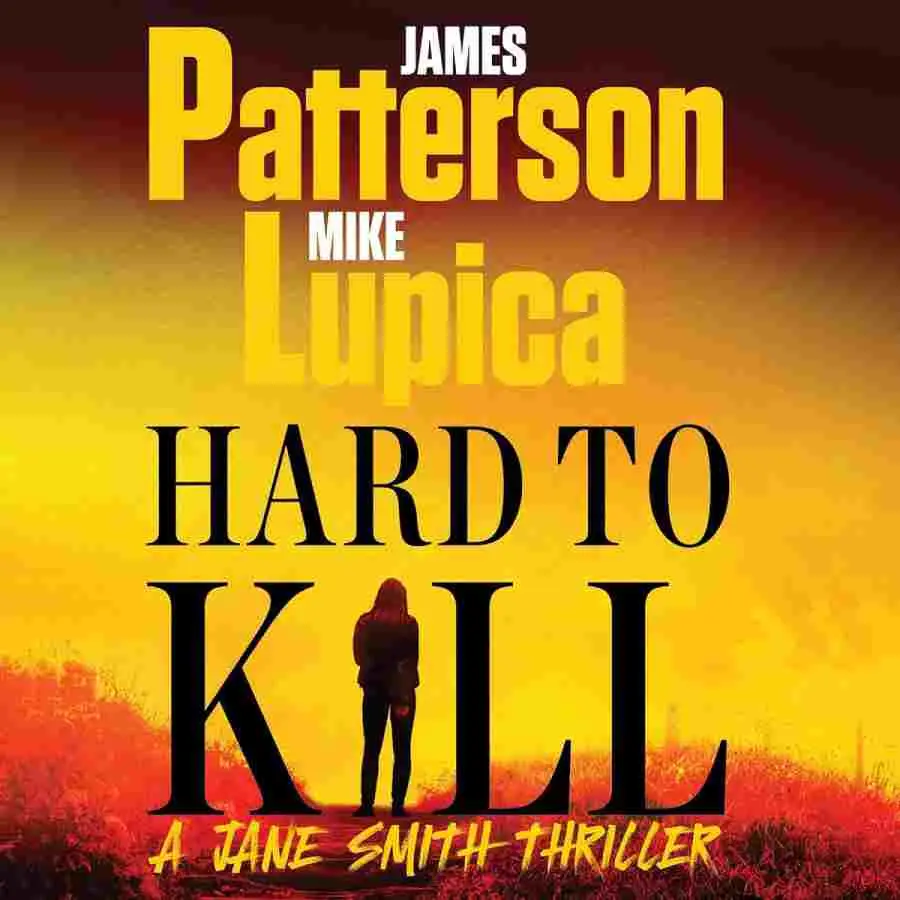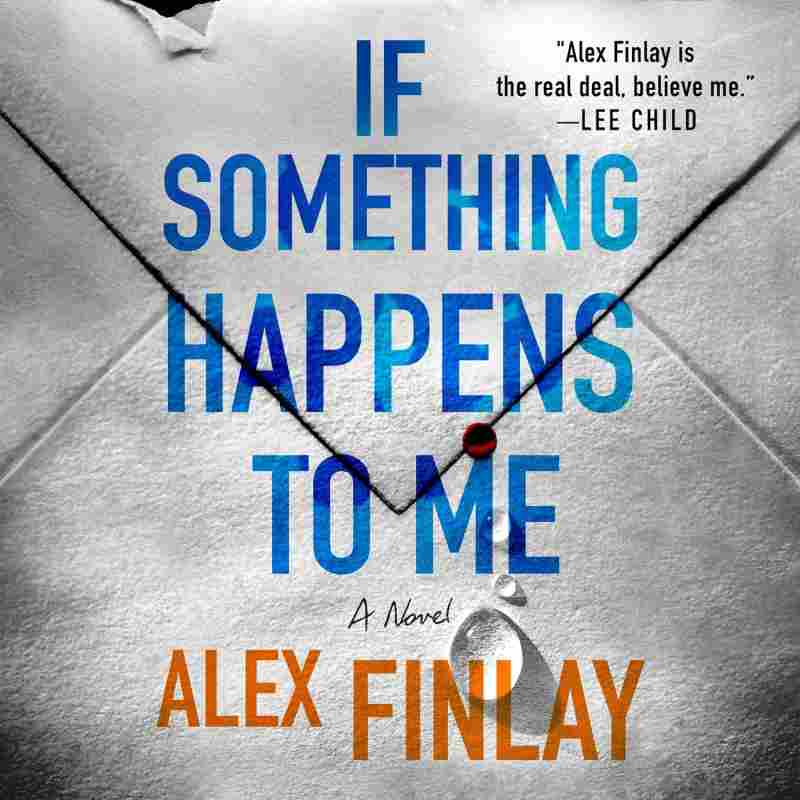

I’ve always enjoyed thrillers—the type of novels that keep you up late, flicking pages with a combination of excitement and fear, wondering what twist the story will take next. Over the years, I’ve read a lot of intriguing books, ranging from legal thrillers to psychological dramas and everything in between. Some have remained with me, while others have faded into the background of my memories. But every now and again, a book comes along that captivates you and refuses to let go. Hard to Kill, by James Patterson and Mike Lupica, is one such novel.
I came upon this book while searching for something to suit my need for a fast-paced, high-stakes thriller. Patterson’s name alone piqued my interest—after all, he is the author of the legendary Alex Cross series, as well as several other blockbusters. What attracted my curiosity, however, was the partnership with Mike Lupica. Lupica, renowned for his sports writing and fiction, sounded like an intriguing match for Patterson, and I was eager to see how their combined abilities would play out in a legal thriller. So, with great anticipation, I jumped into Hard to Kill, and was not disappointed.
This is not my first review, nor will it be my last. But Hard to Kill stands out for a number of reasons, not the least of which is that it reminded me of another book I just read, Michael Connelly’s The Law of Innocence. Both stories revolve on defense lawyers waging apparently hopeless fights, and both examine the moral intricacies of the judicial system. While Connelly’s protagonist, Mickey Haller, is a suave operator who often breaks the rules, Jane Smith, the heroine of Hard to Kill, is a grittier, more determined figure. The comparison between the two works is unavoidable, and I will return to it later in this review.
Overview of the book
Hard to Kill is the second novel in the Jane Smith series, after The Lawyer. For those who missed the previous chapter, Jane Smith is a former NYPD officer who now works as a defense attorney. She’s strong, resourceful, and has a talent for understanding the judicial system’s complexities. But Jane is more than just a hard-nosed lawyer; she is also a woman dealing with her own mortality, fighting cancer while attempting to keep her clients out of jail.
The narrative begins with Jane defending Rob Jacobson, who is accused of two brutal triple killings. The case is a legal nightmare, with overwhelming evidence supporting Jacobson’s guilt. But as Jane investigates more, she starts to think that there is more to the story than meets the eye. What follows is a tense, thrilling adventure as Jane discovers a labyrinth of deception, treachery, and hidden intentions that endangers not just her client’s life but her own as well.
Hard to Kill is a classic Patterson thriller with everything fans have come to expect: a fast-paced storyline, high stakes, and a tough-as-nails protagonist. But what distinguishes this book is its partnership with Mike Lupica, whose influence can be seen in the novel’s compact, snappy style and the complexity of its characters.
Characters
Jane Smith
Jane Smith, the central character of Hard to Kill, is both engaging and intriguing. Jane, a former NYPD beat officer turned defense attorney, offers a unique set of talents to her new career. Her law enforcement experience offers her an advantage in the courtroom, where she employs her street smarts and quick instincts to outwit her adversaries. But Jane is more than simply a fierce lawyer; she is also a woman struggling for her survival.
Jane’s fight with cancer is one of the novel’s most moving moments. It lends sensitivity to her persona, making her more sympathetic and real. Jane is battling not just for her customers, but also for herself, and her personal battle gives her a feeling of urgency that pervades the whole novel. Her disease is a continuous reminder of her mortality, and it influences every choice she makes, both in and out of court.
Despite her condition, Jane is determined to accomplish her work successfully. She’s a warrior, and her persistence makes her a captivating heroine. In many respects, Jane resembles Patterson’s renowned character, Alex Cross. Both are motivated by a strong sense of justice and are prepared to risk all to achieve what is right. Whereas Alex Cross acts on the edge of the law, Jane works inside it, making her struggles more legally and ethically difficult.
Rob Jacobson
Rob Jacobson is the guy at the heart of the novel’s legal drama. Jacobson is accused of killing two families in cold blood, which seems to be an impossible circumstance. The evidence against him is compelling, and even Jane, with her extensive expertise, struggles to find a means to establish his innocence. Jacobson is a character that evokes both pity and distrust in the reader. On the one hand, he seems to be a victim of circumstances, a guy who was in the wrong place at the wrong time. On the other hand, there are times when even Jane questions his innocence, and this uncertainty is one of the novel’s highlights.
Jacobson’s character develops more during the novel. He’s more than just a defendant; he’s a guy with secrets, which gradually come to light as Jane delves further into his history. The more she learns, the more perilous the case gets, and Jacobson’s actual character is put into doubt.
Supporting Characters
The book has a cast of supporting characters who provide depth and complexity to the plot. There’s Jane’s legal team, which offers both professional and emotional assistance as she navigates the lawsuit. There are the victims’ families, whose sorrow and resentment provide emotional depth to the drama. Then there are the many participants in the legal system—judges, prosecutors, and police officers—all of whom have their own agendas and roles to play in the ongoing drama.
Patterson and Lupica thrive at building memorable, three-dimensional characters, and Hard to Kill is no exception. Even minor characters are well-drawn, having motives and backstories that provide depth to the story. This attention to detail is one of the novel’s strengths; each character, no matter how minor, seems like a real person with genuine stakes in the tale.
Plot summary and spoilers
Hard to Kill starts with a bang—literally. Rob Jacobson was arrested after being discovered at the site of a horrific triple murder in the Hamptons. The victims are a rich family with no obvious ties to Jacobson, and the evidence against him is overwhelming. But before Jane can even begin to construct a defense, another family is slain in a similar manner, and Jacobson is once again the primary suspect. The case swiftly becomes a media phenomenon, and Jane finds herself in the middle of a judicial battle.
As Jane investigates the case, she uncovers a sequence of troubling evidence that point to the killings being part of a broader, more evil scheme. The deeper she goes, the riskier the scenario gets. Jane’s inquiry takes her into a world of deception, treachery, and hidden agendas, where nothing is as it seems. The tension rises as she discovers information indicating that Jacobson may be innocent—or at least not the only one implicated in the killings.
However, Jane’s hunt for the truth is hindered by her own personal issues. As she fights cancer, she is forced to face her own mortality and the prospect that she may not survive to see the trial’s conclusion. This personal conflict lends an emotional depth to the plot, making Jane’s quest as much about survival as it is about justice.
The novel’s finale is tense, with Jane racing against time to discover the truth before it’s too late. The ultimate disclosure is both surprising and rewarding, connecting together the plot’s numerous strands in an unexpected but inevitable manner. Without giving too much away, the finale of Hard to Kill will satisfy readers while also leaving them ready for the next part in the series.
Analysis and Themes
Legal and Moral quandaries
Hard to Kill explores the legal and moral challenges of the criminal justice system. Jane’s work as a defense attorney causes her to confront severe ethical quandaries: how far should she go to defend a potentially criminal client? What happens when the quest of justice clashes with the requirements of the judicial system? These are long-standing problems in legal thrillers, but Hard to Kill approaches them with a new viewpoint.
Jane’s experience as a former policeman lends an intriguing element to the plot. She understands the system from all sides, having served as a police officer and a lawyer. This dual viewpoint provides her with a unique understanding of the judicial system’s shortcomings and limits, as well as the opportunity to face her own prejudices and preconceptions. The story does not shy away from delving into the gray regions of the law, where the distinction between right and evil is often muddled.
Surviving Against the Odds
Jane’s fight with cancer lends emotional dimension to the plot. Her fight against the cancer is similar to her fight in court—a struggle for life against tremendous odds. The concept of perseverance runs throughout the work, giving Jane a figure who readers can’t help but cheer for, despite her imperfections.
Justice and Revenge
The work also delves into the issue of justice vs vengeance. The victims’ relatives are seeking closure, and there is a tangible conflict between the demand for justice and the need for revenge. This topic is especially strong when Jane finds the underlying intentions behind the killings, challenging her assumptions about the nature of justice.
Comparison of Other Works
Hard to Kill reminded me of Patterson’s other books, notably the Alex Cross series. Both have strong protagonists who are determined to learn the truth, no matter the personal cost. However, although Alex Cross often works in the gray regions of law enforcement, Jane Smith is solidly established in the legal system, making her difficulties distinct but no less difficult.
Another parallel that comes to mind is Michael Connelly’s The Lincoln Lawyer. Both books depict defense lawyers who are not only battling for their clients, but also dealing with personal issues that threaten to wreck their careers. Whereas Connelly’s Mickey Haller is a smooth-talking lawyer with a talent for winning cases, Jane Smith is a grittier, more hard-edged heroine motivated by her personal troubles as much as her professional ethics.
Final thoughts
Hard to Kill is a gripping book that mixes the greatest features of legal thrillers with Patterson’s trademark dramatic, fast-paced narrative. Jane Smith is a wonderful addition to Patterson’s pantheon of protagonists—strong, resourceful, and completely human. The novel’s investigation of legal and moral quandaries, together with its tight plot and well-drawn characters, make it a must-read for aficionados of the genre.
If you’re searching for a thriller that will keep you wondering until the last page, with a protagonist you’ll cheer for against the odds, Hard to Kill should be at the top of your list. Patterson and Lupica have created a novel that is both compelling and thought-provoking, a rare combination that will please even the most discriminating thriller fans.
Stay tuned for my next review—there’s always another great book around the corner.


